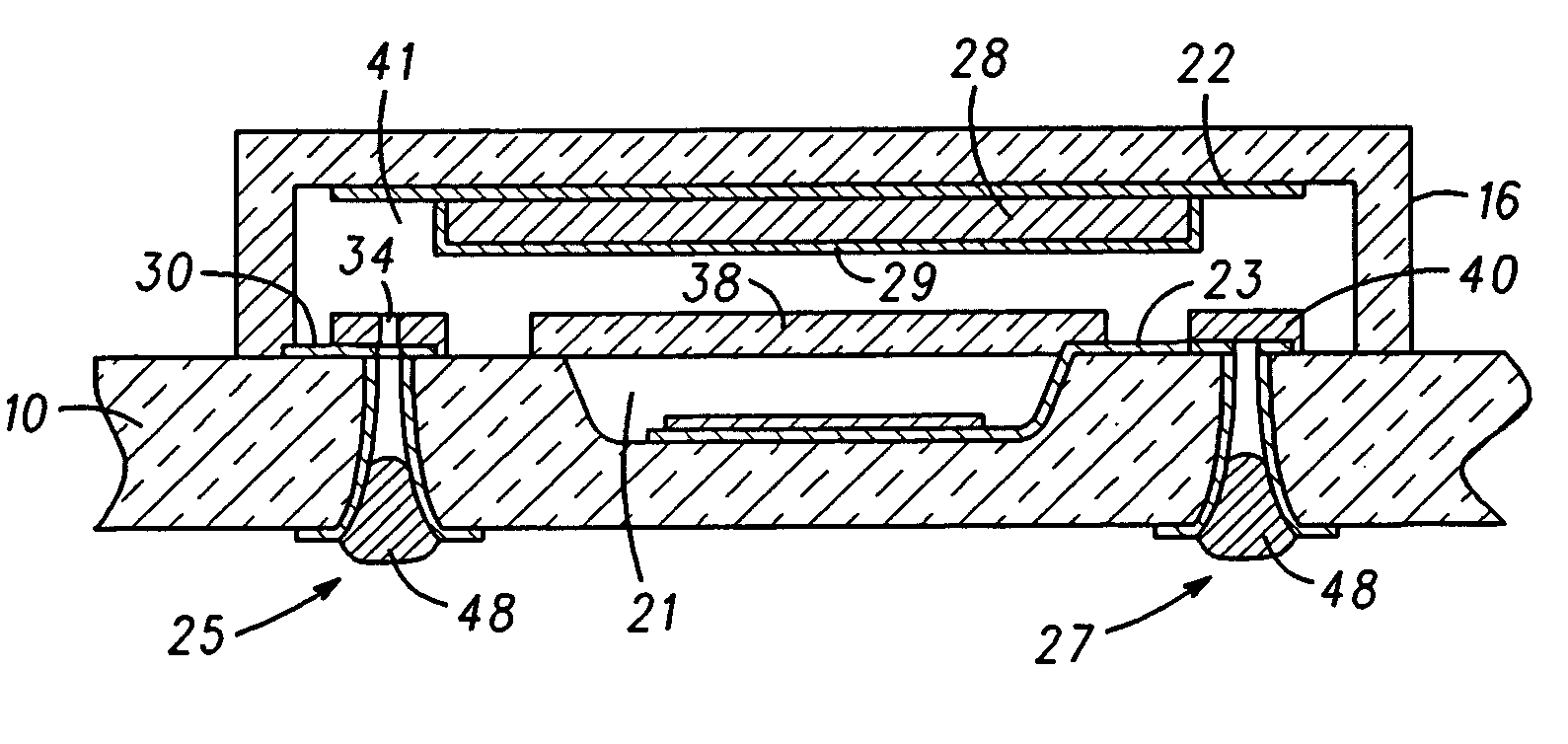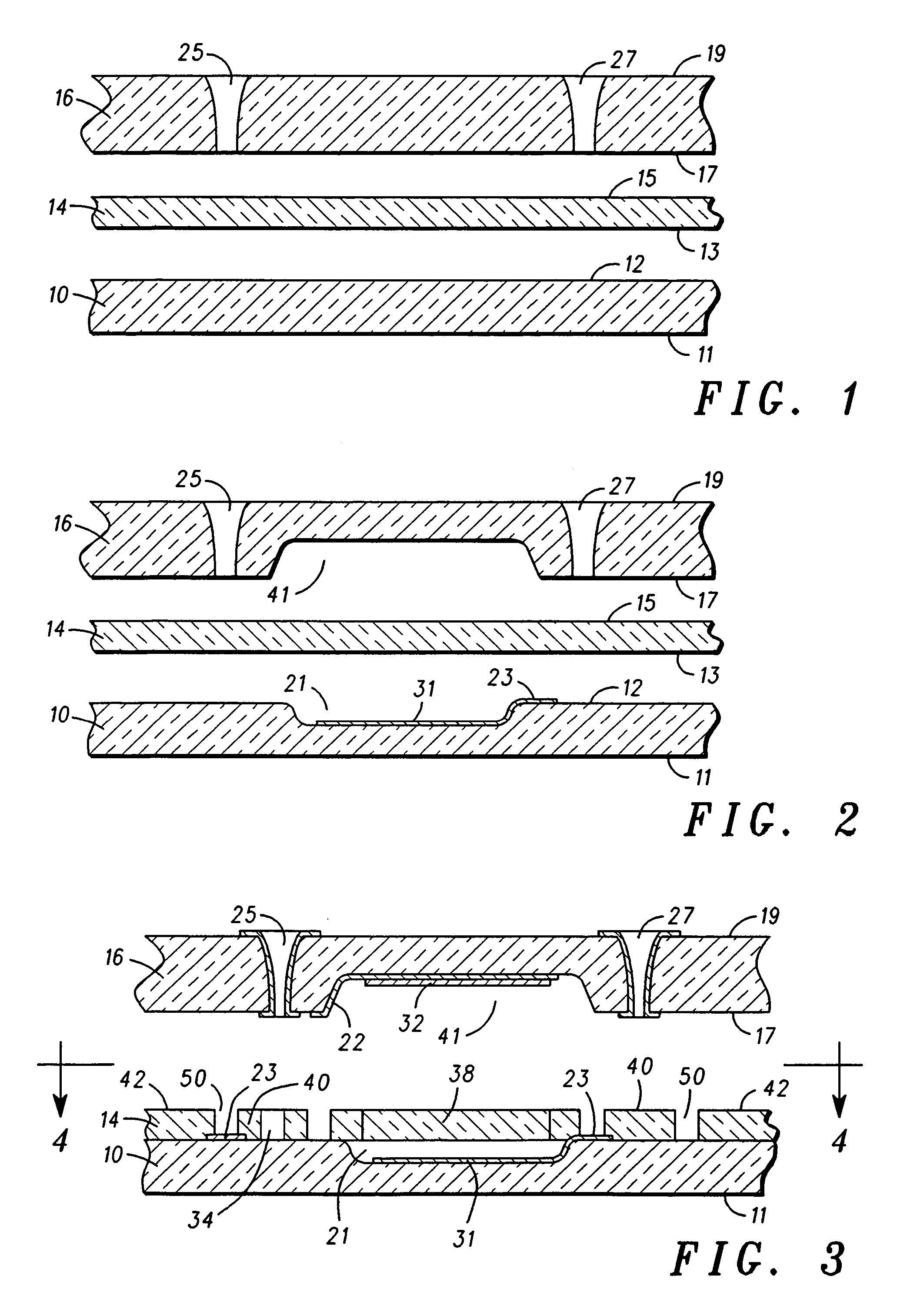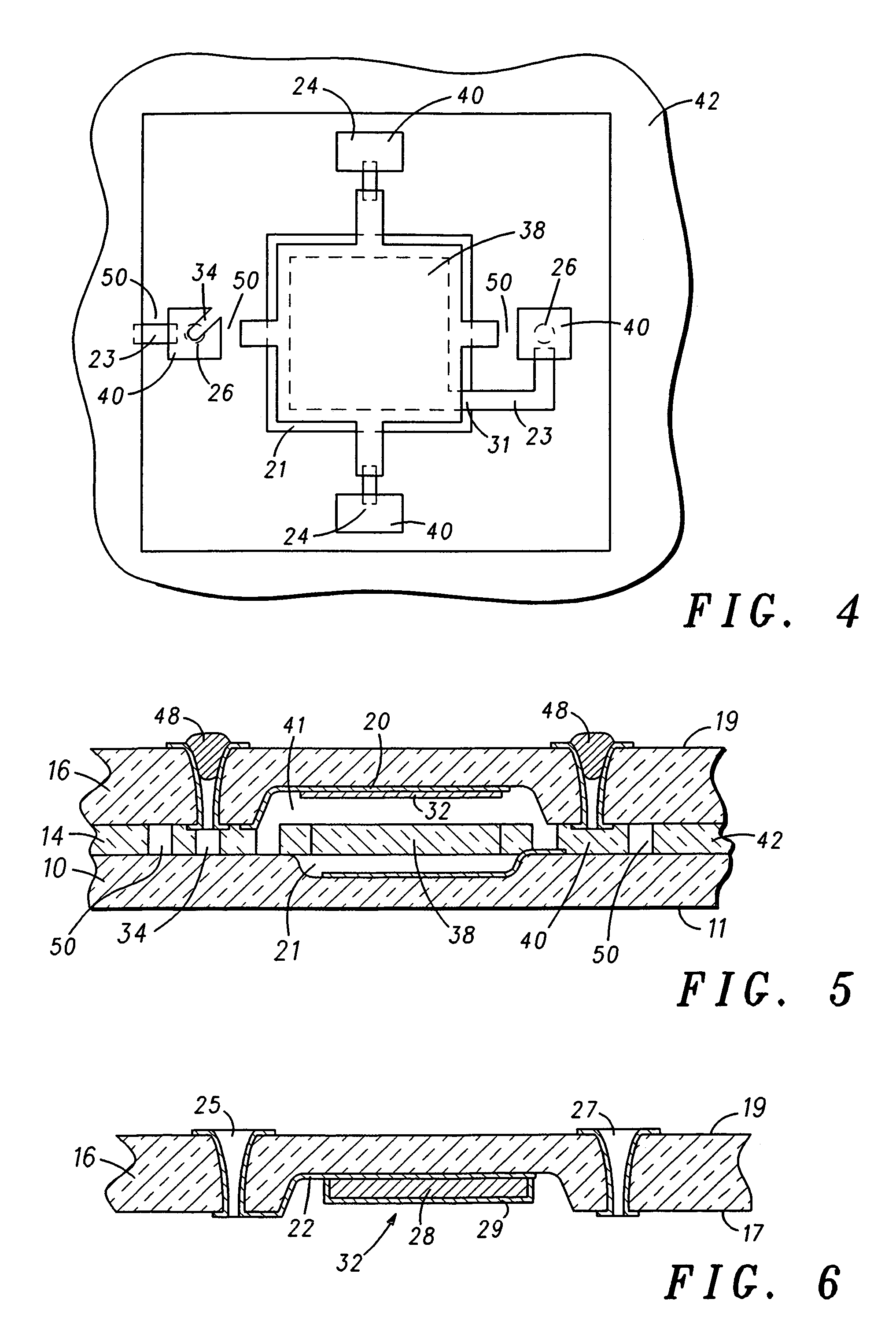Hermetically sealed microdevice with getter shield
a technology of getter shield and micro-device, which is applied in the manufacture of electric discharge tubes/lamps, electrical devices, and electrical systems, etc., can solve the problems of difficult manufacturing and expensive production, prone to pressure increase in vacuum sealed cavities, and operational problems
- Summary
- Abstract
- Description
- Claims
- Application Information
AI Technical Summary
Benefits of technology
Problems solved by technology
Method used
Image
Examples
Embodiment Construction
[0016]The present invention is a packaging assembly for a microdevice and method therefor, which can provide a vacuum environment for the microdevice under a hermetic seal. The microdevice is provided in a simple assembly at a low cost and with a high reliability. In particular, the present invention provides a simple assembly structure that can be easily evacuated and hermetically sealed. Specifically, a vent channel is integrated in the same silicon wafer, and processed at the same time, when constructing the actual microdevice. Preferably, a metallic getter is incorporated into the package to maintain the vacuum, particularly in view of the various higher temperature sealing processes that can cause outgassing within the package. More preferably, the metallic getter is also used as an electrical shield and / or ground.
[0017]For purposes of illustration and description, an example of a micro gyroscope will be used as the microdevice. However, the present invention is not limited to ...
PUM
 Login to View More
Login to View More Abstract
Description
Claims
Application Information
 Login to View More
Login to View More - R&D
- Intellectual Property
- Life Sciences
- Materials
- Tech Scout
- Unparalleled Data Quality
- Higher Quality Content
- 60% Fewer Hallucinations
Browse by: Latest US Patents, China's latest patents, Technical Efficacy Thesaurus, Application Domain, Technology Topic, Popular Technical Reports.
© 2025 PatSnap. All rights reserved.Legal|Privacy policy|Modern Slavery Act Transparency Statement|Sitemap|About US| Contact US: help@patsnap.com



